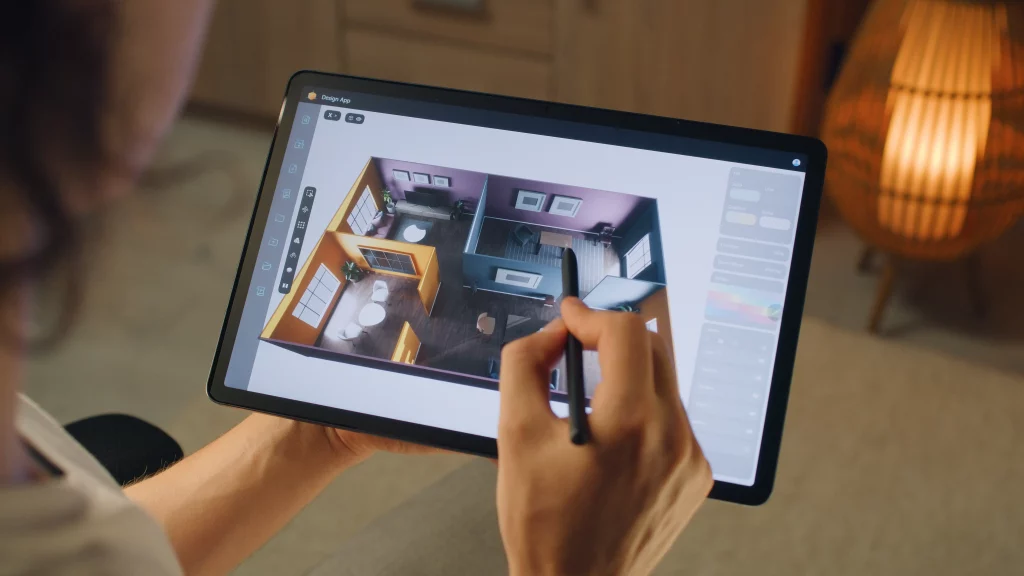Embarking on your first interior design job is a thrilling adventure that marks the beginning of a unique and creative career. It’s a time filled with possibilities and the excitement of applying years of study to real-world scenarios. However, transitioning from the theoretical knowledge of academia to the practical demands of the professional world can also be overwhelming. This shift challenges you to deploy your artistic talents and technical skills in new and demanding ways, often pushing you to adapt and grow beyond the confines of the classroom.
As you stand at this significant threshold, understanding how to navigate the complexities of your new role is crucial. Excelling in interior design requires more than a keen eye for aesthetics; it demands robust communication, meticulous project management, and the ability to foresee and tackle challenges proactively. This introductory guide aims to equip you with practical advice and foundational strategies to help you thrive in the early stages of your interior design career. By embracing these principles, you can confidently move forward, transform spaces effectively, and build a rewarding career that resonates with your passion for design.

What can interior design graduates expect?
An interior design job involves a blend of creative and technical tasks aimed at enhancing the functionality and aesthetics of indoor spaces. Here’s a detailed breakdown of what such a job typically entails:
- Understanding Client Needs: Interior designers begin by meeting with clients to discuss their vision, needs, and budget. This stage involves asking detailed questions to understand the client’s lifestyle or business requirements.
- Site Assessment: Designers often visit the space to assess its dimensions, structure, and potential, taking note of any specific challenges or opportunities.
- Conceptualisation: Based on the initial consultation, designers develop a conceptual design. This includes creating mood boards, colour schemes, and preliminary layouts.
- Technical Drawings: Creating detailed drawings and specifications for construction, including electrical layouts, plumbing, and custom elements, using CAD software and other tools.
- Space Planning: Designers arrange spaces efficiently to optimise flow and functionality. They plan the layout of rooms, placement of furniture, and traffic patterns within the space.
- Choosing Materials: Selection of materials for floors, walls, and ceilings is crucial and depends on the usage, budget, and aesthetic preferences.
- Estimations: Designers provide clients with budget estimates for all aspects of the project, including materials, labour, and furnishings.
- Onsite Supervision: Overseeing the implementation of the design, ensuring that the installation of materials and construction of elements are according to the design specifications.
Client Walk-through: Presenting the finished space to the client, addressing any feedback, and making final adjustments.
Essential Skills for Aspiring Interior Designers
Interior design is a multifaceted profession that requires a diverse set of skills. From the precision of technical drafting to the creativity of conceptual design, professionals in this field must wear many hats. Here’s what you need to know to navigate the complexities of interior design successfully.
Technical Skills
Technical skills form the backbone of an interior designer’s toolkit, enabling them to bring visions to life with precision and professionalism. Mastery of computer-aided design (CAD) software such as AutoCAD, SketchUp, and Revit is essential, as these tools are critical for creating detailed floor plans, elevations, and renderings. Knowledge of building codes, ADA requirements, and construction methods is also crucial to ensure that designs are not only beautiful but also feasible and compliant with safety standards. Additionally, an understanding of the properties of various materials and how they interact with different environments allows designers to make informed choices that combine durability and aesthetic appeal.
Creative Skills
Creativity is at the heart of interior design, empowering designers to conceptualise and execute unique and compelling spaces. This skill set involves more than an eye for colour and a knack for decoration; it requires an innovative approach to problem-solving, the ability to envision functional and stylish spaces, and the skill to transform ideas into tangible, impactful designs. Designers must also stay abreast of design trends and historical styles to keep their work fresh and relevant. Effective creative skills mean being able to see the potential in every space and imagining ways to enhance its natural beauty while tailoring designs to the client’s tastes and lifestyle.
Project Management Skills
Efficient project management is critical in interior design, ensuring that projects are completed on time, within budget, and to clients’ satisfaction. This includes developing project timelines, coordinating with contractors and suppliers, and managing resources effectively. Strong organisational skills help in tracking project phases and in maintaining clear communication with all stakeholders involved. Interior designers must also be adept at budget management, which involves preparing cost estimates, negotiating prices with suppliers, and adjusting design elements to align financial and aesthetic goals. Ultimately, good project management results in smoother workflows and more successful project outcomes, building trust and client satisfaction.

Tips for Interior Design Graduates
Hone Your Technical Skills
Make sure you are proficient with industry-standard design software such as AutoCAD, SketchUp, Adobe Creative Suite, and Revit. These tools are essential for creating professional-grade designs and presentations.
Build a Strong Portfolio
Include a variety of projects that show your range in terms of style, budget, and type of space (residential, commercial, hospitality, etc.). A well-rounded portfolio will appeal to a broader range of potential employers or clients.
Develop Soft Skills
Soft skills are key in managing clients and vendors. Effective communication can define how smoothly the project goes, and negotiation skills can ensure that you maintain your design integrity while adhering to budget constraints.
Understand Business Practices
Basic knowledge of business practices, including contracts, invoices, and project management, is vital. Understanding these can help you run projects more efficiently and avoid common pitfalls.
Continue Learning
The design world is always evolving. Continued education through workshops, courses, and certifications can keep you updated with new trends, materials, and technologies.
Empowering Interior Designer Graduates to Excel
Thriving in the field of interior design demands a blend of creativity, technical proficiency, and adept project management. As you begin this exciting career path, partnering with a leader like AcePLP can significantly enhance your capabilities and project outcomes. With our extensive range of BIM services and a commitment to fostering technical excellence through rigorous training programs, AcePLP is ideally positioned to support your journey in the architectural, engineering, and construction industries. If you want to elevate your projects and streamline your workflows, we invite you to contact AcePLP today to explore how our solutions can be tailored to your needs. Let us help you transform your professional aspirations into tangible successes.
